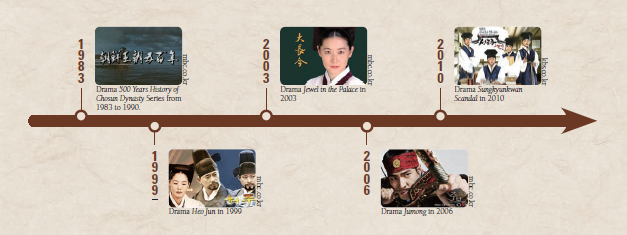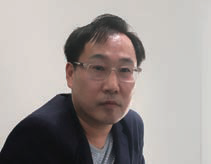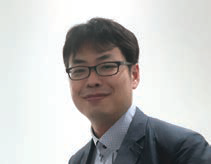Last month, The Last Princess, a movie about princess Deokhye, was released and received many praises from the audience for its profound storyline and the emotions behind the acting. However, this movie was also criticized for its historical distortions portrayed in the behaviors of the princess. This problem of distorting real historical instances is not only limited to just this one movie, but is actually found commonly in many historical dramas as well. Therefore, the Sungkyun Times (SKT) deeply analyzes historical dramas and interviews two history experts to scrutinize future prospects and attain proper perspectives towards historical dramas.
General Descriptions About Historical Dramas
Expert opinions differ on the classification of historical dramas. However, it is often said that there are two types of Korean historical dramas in general.
1. Authentic Historical Drama
An authentic historical drama is a type of drama that is made objectively after precise research on the historical facts. Authentic historical dramas shed a new light on a specific character or a historical event. Most often, stories pertain to royal families and courts as a melodrama, with the court ladies searching for love or a royal protagonist fighting for authority. Authentic dramas also incorporate narrations. The narrator gives the audience additional information about certain incidents and characters within the drama. For example, in the drama The Jingbirok, a battle scene was omitted and a map with narration was provided instead. The narration also provides factual descriptions whenever distorted or dramatized parts appear in the drama.
2. Fusion Historical Drama
A fusion historical drama is a type of drama in which the story line is based hugely on the writer’s imagination. Fusion historical dramas first made their appearance as a reaction to a decrease in popularity of authentic historical dramas. Since writers are able to create dramas in accordance with their imagination, they can reflect on situations of the current society and make critical points. However, it may just focus only on entertainment, like the drama Sungkyunkwan Scandal, which covered a love story of youths and political disputes. Additionally, fusion historical dramas sometimes provide information on historical periods which are actually recorded in history while everything else is fictional. For example, the movie Kundo: Age of the Rampant is based on an actual riot that took place in Jeonju several hundred years ago, while all the characters that appeared in the film were fictional.

Limitations of Both Types of Historical Dramas
As historical dramas are essentially based on historical facts, the audience tends to unquestioningly believe what historical dramas suggest. This tendency results in confusion among the public as it can create distorted images of historical figures or events. Although there are captions saying that the drama “was dramatized for entertainment,” the viewers unconsciously accept the dramatized scenes. Moreover, these dramas do not clearly show the boundaries between fictional and nonfictional elements. This can most clearly be seen in the drama Empress Myeongseong. Empress Myeongseong was a sybarite, deaf to remonstrance, and persecuted those who put reforms forth. However, in the drama, she is depicted as a patriot who fights for her people.
Effort to Solve the Limitations
To prevent distorted historical facts from spreading among the public, directors of fusion historical dramas are continually trying to further their historical research. For example, in the drama Horse Doctor, the surgery was made based on the Dongeui Bogam, which is regarded as the number one medical book that represented the Joseon Dynasty. Moreover, directors stopped deifying certain characters. Traditionally, the main characters are considered kind, while their opposition is evil. This was to show the clear contrast between the protagonist and antagonist. Nevertheless, nowadays, antagonists are not just purely evil, but have justifiable reasons for their behavior which prevents protagonists from being dei_ed. Furthermore, there are some efforts to see the same incidents from different perspectives, allowing one event to be understood in a different way. This is what is shown in Six Flying Dragons, which covers the story of Jeong Do-Jeon and Yi Bang Won who were always against each other.
Transition of Korean Historical Dramas Korean Historical Dramas’ Change throughout History
In the 1970s, historical dramas were a part of government policies rather than creative works produced by individuals. They worked as a tool for educating, and bringing the nation together. One popular historical drama covered Chungmugong Yi Sun-sin, a national hero that overcame many difficulties and dedicated himself to his country. It was not to show his personal life, but to inspire patriotism in the audience. In the 1980s, the movie industry in Korea had been bolstered by the government’s “3S policy,” (the 3S being Sex, Screen, and Sport) which was made to dumb down the public through media. As such, the most popular historical dramas and _lms released during this time include hidden, provocative stories behind the royal courts. In the 1990s, historical dramas that paid attention to the ordinary lives of commoners became popular. The most representative case would be Heo Jun, a story about the most renowned doctor in the Joseon Dynasty. However, authentic historical dramas relating to the life of noblemen generally had the highest popularity rate among all historical dramas. In the 2000s, China initiated the Northeast Project in an attempt to claim the history of Goguryeo, the predecessor of Korea, as Chinese history. As a countermeasure to this project, Jumong and Legend stimulated the public awareness of history as well as of the Northeast Project, which had caused repercussions nationwide. At the same time, fusion historical dramas appeared which overcame the lack of historical research with the writers’ creativity. They concentrated on hypothetical events that might have occurred rather than actual written records. Since this sort of drama had never been introduced to the public before, it garnered huge public attention. One of the main examples of fusion historical dramas was Jewel in the Palace, illustrating the lifestyle of women as described in the Annals of the Joseon Dynasty, a history book of the Joseon Dynasty written in chronological order, as its motif. In the 2010s, fusion historical dramas have been continually gaining popularity. Period dramas with a modern touch allowed for easier access for the audience because materials that are more familiar help people understand the story more easily. For example, the above mentioned Sungkyunkwan Scandal is about something people still can easily relate to, and is still applicable to today’s society.
Ways to Improve Historical Dramas and Attitudes of the Audience
Interview


Q1. What do you think is the reason behind the consistent and exponential increase in the number of historical dramas as well as their decent reputation?
Lee: The increasing number of historical dramas is something that experts congratulate upon. As people become more interested in historical dramas, they will try to look for more details and request more accurate historical facts, which encourages directors to pay more attention to the completeness of their production.
Kim: I agree with what the professor said. Additionally, I think the growing interest in historical dramas shows that our society is going through a transition period. Whenever people faced a period of transition, they often looked to the past and learned lessons from it, because certain historical events are similar to the present. Therefore, societies experiencing a transition period look back at their history and learn insight for the dim future, and I think this is what is happening in our society.
Q2. Through research, the SKT found that one of the limits of Korean historical dramas is the use of historical distortion to overcome the decreasing popularity of authentic historical dramas. What other factors contribute to this role?
Kim: The fictional story lines of the historical dramas are understandable because it is a drama. However, even the background of historical dramas nowadays does not fit with the historical evidence. A few months ago, an assistant writer and a director of a drama came to me to speak about historical facts. However, I think historical research for dramas should be more than just asking experts. When we think of the process that cartoonist Huh Young-man takes in making comics, he actually goes to restaurants and experiences the real environment. I think that even though we cannot actually experience the past, directors should put more effort into making the drama as though they are experiencing the past in person.
Lee: I also agree with this. When I read the reports on writing about fictional and non-fictional historical dramas from university students, they pointed out that details like the shape of swords and the types of guns were incorrect. There are especially many problems in historical facts about the monetary system and costumes.
Q2-1. On the other hand, there are some opinions that distorting historical facts is okay because they are just dramas. What are your thoughts on this point?
Lee: I think that just because they are dramas, keeping historical facts intact should not be neglected. The audiences receive information from historical dramas more directly than they do through textbooks or other materials. Therefore, wrong details in historical dramas make people have wrong historical recognition.
Kim: Historical dramas nowadays work like fairy tales or folklores of the past in that they give people entertainment. In the past, tales were exaggerated and distorted as they were orally passed down. This distortion made people ignorant and widened the gap between the ruling class and laypeople. It works the same today. In fact, the highest percentage of people who read history books are CEOs. In the same way, when people learn wrong historical facts, the same mistake will be repeated.
Q3. Both of you are encouraging students and readers to reconsider the attitude towards history. What are the reasons for your behaviors?
Kim: People’s interest in historical dramas has increased since 2004, and has especially gone up in 2006 when China started the Northeast Project. Likewise, historical dramas show what the Korean people are interested in. Therefore, I started publishing Reading History through Historical Drama serially to fulfill people’s historical curiosity.
Lee: The reasons for the report I gave to students to research about historical dramas and real history is to give students a valuable opportunity to watch historical dramas not just for fun, but to compare them to real history. Actually, there are people who read martial arts novels just for fun, while other people who read them while considering historical backgrounds understand the story deeply. Just like this, if students try to consider both history and historical dramas at the same time, I think they can understand the story more deeply and learn to think critically.
Q4. Please tell us what you think is the best attitude towards history?
Kim: I hope readers consider history as a friend or a helper in their lives. For example, the story of Jeong Yak-yong, who persuaded his sons to keep studying even though they could not be offered a place in the government service, can make people who are disappointed in their circumstances keep working on what they have done. When we get close to history with an open mind, a number of instances in history could help us relate and give individual advice.
Lee: Imagine what it might feel like to be a character in one of the novels you were reading. The same thing can be done with history. When people imagine, they become the characters and think in certain ways, which could be more helpful to readers than just reading history.
Interviewing two experts was a chance to get to know the impact of historical dramas. The SKT hopes that the readers had time to think about how to approach historical dramas and understand our history.
